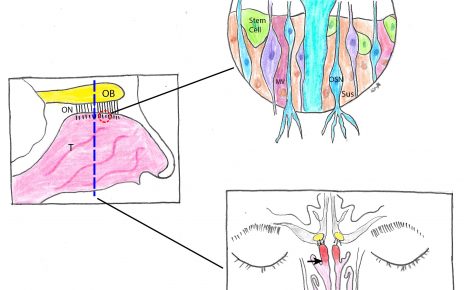Delivering accurate health messages to people around the world has never been more urgent than during the COVID-19 pandemic. But delivery means little when messages are left unopened or unattended. In order to truly reach the public with lifesaving health information, public health authorities need to redesign their messages to grab the public’s attention and meet them there they are—on social media.
In the early weeks of the crisis, medical experts and public health agencies watched a tidal wave of misinformation flood social media channels. Clever memes and short, entertaining videos played on paranoia, fear and stigmatization, aggravating an unprecedented global state of anxiety and confusion. Social media figures suggested anecdotal preventive strategies that ranged from simply ineffective to life-threatening. Some posts advised readers to snort cocaine, drink bleach or avoid ice cream to prevent infection with the virus. One televangelist instructed viewers to touch their television screens during his show in order to be cured of the virus. Because the scientific community was unaccustomed to disseminating messages on social media, the most reliable voices on health struggled to break through the noise.
Public health agencies that did venture into the social media space did so with varying degrees of success. The Centers for Disease Control and Prevention (CDC) posted several informational videos on YouTube. While providing much-needed guidance, these were narrated by subject matter experts using technical language. Both the instructional tone and the language used were major barriers for the general public.
The World Health Organization (WHO) did better at reaching the public, setting up a text-based WhatsApp COVID-19 information delivery service in five languages. The English version even included an animated short video that was viewed 500,000 times within a month of being posted. This 30-second video is among the earliest examples of the WHO venturing into the realm of “health entertainment.” While the messages were still delivered as a list of instructions, we also caught glimpses of some entertainment strategies, including humor, quirky animations and clever sound design.
At Stanford Medicine, our small team took things a step further. In order to deliver messages across the globe without the need for translation or cultural adaptation, we designed the first wordless, culturally neutral COVID-19 prevention animation in late March. The virus is shown spreading from person to person through simple, animated color transfers.
The soundtrack is designed to underscore the seriousness of the crisis in the first portion, then convey a sense of hope and audience empowerment in the second half. The video was viewed more than a million times within the first 10 days of its release on Stanford’s social media platforms. Requests for reuse by international health organizations and media outlets in six global regions streamed in.
And we weren’t alone. Ohio’s Department of Public Health followed suit two weeks later, releasing a compelling 30-second video demonstrating the power of social distancing. Like our animation, this short video relies on simple but highly compelling visual representations, using ping pong balls loaded on primed mousetraps to represent the exponential increase in infections if people fail to follow social distancing guidelines. A bombastic, cinematic soundtrack, meanwhile, underscores the seriousness of the recommendations and the implications of ignoring them.
By almost entirely avoiding the use of words, both the Stanford and Ohio videos were easily understood by different language groups. At Stanford, we even received letters of thanks from representatives of the deaf and hard-of-hearing community. We’re now planning to measure the impact of this kind of messaging with a large, online randomized controlled trial currently being co-designed by researchers at Stanford and the Heidelberg University Institute of Global Health.
Like any fundamental change in strategy, shifting our approach to public health communication will require an investment of energy and financial resources. We want to keep capturing our audience’s attention through entertainment-driven techniques including creative storytelling, high-quality animation and powerful sound design. Just as in the entertainment industry, health communication initiatives need to take our audiences’ breath away, make them laugh—make them feel something. Emotional engagement will help viewers hear and remember accurate health messages long after the video that delivers them ends.
Pressing questions remain about how health messages will need to be implemented differently in different parts of the world. We still don’t know what “social distancing” will look like in places where neighborhoods share toilets and families live less than six feet apart. Gathering input from a diverse sampling of learners, during the design and production process, can help to make science-based health messages as inclusive as possible. Delivering information in ways that everyone, everywhere, can understand also supports local innovation, helping communities around the world implement locally feasible solutions to recommended behaviors like social distancing and handwashing.
An unprecedented global crisis demands unprecedented creativity in the health communication field. The world’s most trusted voices in public health urgently need to be heard by meeting their audiences on social media and capturing their attention through innovative message design. We’ll never come up with impactful, innovative solutions if we stay inside our comfort zone.




